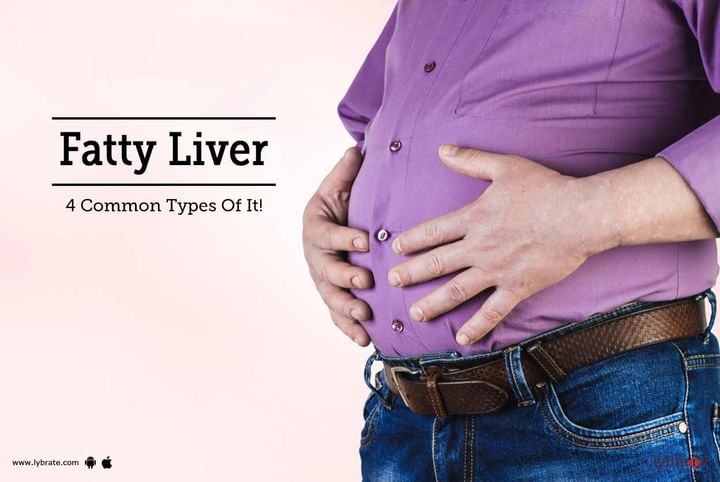Fatty Liver - 4 Common Types Of It!
The liver is a vital body organ (the second largest) that helps in detoxification of the harmful substances and chemicals, in addition to participating in various metabolic pathways. It is normal for the liver to contain some amount of fats. The problem arises when there is an excess deposition of fats (accounting to nearly 7- 10% of the total liver weight), a condition referred to as Steatosis or Fatty Liver. Fatty liver often interferes with the normal functioning of the liver triggering serious consequences.
Types of fatty liver
- Alcoholic Fatty Liver: As the name suggests, the condition is an outcome of excessive alcohol consumption.
- Nonalcoholic Fatty Liver (NAFL): Here the problem or the trigger is not alcohol. The excess fat deposition in NAFL (~10 % of the total liver weight) results from the inability of the liver to break down the fat molecules.
- Nonalcoholic Steatohepatitis (NASH): In NASH, the liver tends to swell up due to excess buildup of fats in the liver tissue (alcohol is not the trigger in NASH)
- Acute fatty liver of pregnancy: Some pregnant women may suffer from this fatal condition (extremely rare).
Causes of fatty liver
Fatty liver is a common condition that often results from unhealthy diet and lifestyle practices. In this context, it is important to mention that unlimited alcohol consumption plays a pivotal role in various liver disorders, with fatty liver being one of the most common consequences. In fact, steatosis is one of the earliest stages associated with alcohol related Liver disease. However, fatty liver is a reversible condition that can be successfully treated if diagnosed at an early stage.
The excess deposition of fats in the liver cells can be an outcome of medical conditions such as
Besides alcohol, obesity is one of the biggest factors responsible for fatty liver. As per a survey, 1 in every 50 obese people suffers from fatty liver and other related complications (scarring, liver hepatitis or liver cirrhosis).
- In addition to obesity, hyperlipidemia (a medical term used to define increased levels of lipids in the blood), high blood pressure, diabetes mellitus may have a significant role in triggering fatty liver.
- Rapid weight loss or malnutrition can, more than often, give rise to fatty liver and its related disorders.
- The use of certain medications such as carbon tetrachloride, tetracycline, and corticosteroids may be a contributing factor in fatty liver and associated complications.
- Genetics can also play a significant role in triggering steatosis in some people.
- Though fatty liver can affect children and young adults, people in the age group of 40 - 60 years are more susceptible to the condition.
Symptoms associated with fatty liver
There are no characteristic symptoms associated with fatty liver. However, in general, a person may experience
● Abdominal discomfort
● Extreme tiredness
With time, a person left undiagnosed and untreated, may exhibit the following symptoms
● A changed appetite (there is often a loss of appetite)
● Sudden weight loss (unexplained)
● Weakness
● Abdominal pain
In case you have a concern or query you can always consult an expert & get answers to your questions!



+1.svg)
